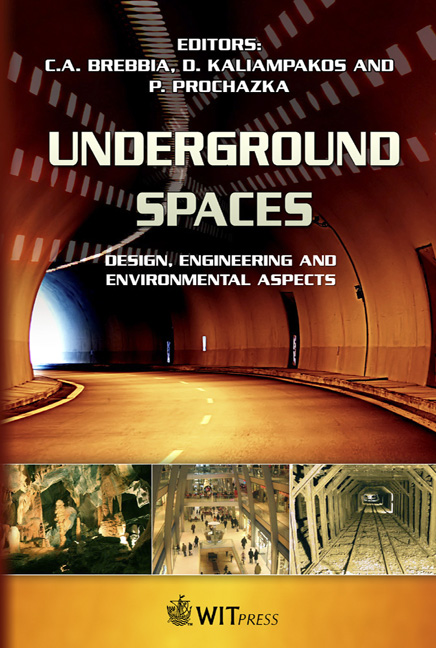Damage Zones Near Excavations: Plastic Solution By Means Of Stress Trajectories
Price
Free (open access)
Transaction
Volume
102
Pages
9
Page Range
109 - 117
Published
2008
Size
1,655 kb
Paper DOI
10.2495/US080121
Copyright
WIT Press
Author(s)
P. Haderka & A. N. Galybin
Abstract
This study presents an alternative approach for identification of damaged zones near excavations. The approach is based on ideal plastic solutions but in contrast to the classical case it deals with the Cauchy’s problem only by alternating classical solutions for slip zones with solutions for stress trajectories followed by conversion of the latter into slip grids. Comparisons with classical solutions are discussed. Keywords: ideal plasticity, slip lines, stress trajectories. 1 Introduction Damaged zones near excavations are frequently observed in underground mines. They present a significant issue for safety and effectiveness of mining operations and should be properly accounted for in design of particular excavations. This paper is aimed at the development of numerical methods for determination of damage zones in the case of long-wall excavations such as tunnels, well-bores, tabular stopes, etc. Another important motivation of this study is the application of a variant of the stress trajectory element method, STEM, which is currently under development in the Wessex Institute of Technology [1]. The method addresses the problem of stress identification in statically determined bodies by employing stress trajectories. The concept of stress trajectories comes from photoelasticity, therefore one can adopt the following definition due to Frocht [2]: Stress trajectories are curves the tangents to which represent the directions of one of the principal stresses at the points of tangency. Stress is a second-rank tensor which components satisfy differential equations of equilibrium, DEE, and certain constitutive equations. The latter constitute a broad class and some examples are found in engineering:
Keywords
ideal plasticity, slip lines, stress trajectories.





